While there isn’t a single best camping lantern for everyone, we sure looked for one. We’ve tested nearly 40 different light sources across half a decade of camping seasons to pull together a list of the most worthy light sources to bring on your next wilderness outing. Our choices have traveled with us from the dark deserts of Joshua Tree to the green tunnels of the Appalachian Trail, and we weren’t gentle on them, either.
A good camping lantern is an outdoor essential. It’s a major help while cooking, is great for nightly camp games, and sets just the right outdoor ambiance. Sure, you could just use a flashlight or headlamp, but a top-pick lantern like the BioLite AlpenGlow 500 lights up the entire camp, and even budget options like the Duracell Tri-Power put out enough to illuminate the inside of your tent.
During our testing, we charged up, gassed up, and lit up our campsites with lanterns — paying special mind to a number of different factors: light output, power supply, burn time, durability, and more. Below, we’ve broken the list into handy categories to help you identify the best lantern for your use.
Editor’s Note: We updated our Camping Lantern guide on October 2, 2025 to add the BioLite Luci Original Clear Lantern, a classic inflatable light that’s simple to use and stays topped off on power after a day in the sun. We also added new rating attributes to our suggestions to allow for better comparison between options.
The Best Camping Lanterns of 2025
Best Overall Camping Lantern
8.9/10 Rating
Best Budget Camping Lantern
6.3/10 Rating
Best Solar-Powered Lantern
8.5/10 Rating
Best Candle Lantern
6.0/10 Rating
Best Camping Lantern for Overlanding
7.6/10 Rating
Best String Lights
7.9/10 Rating
Most Rugged Camping Lantern
7.1/10 Rating
See more picks
-
Ability to recharge electronics from the 6,400 mAh power bank -
Many different modes to choose from and suit the mood -
ChromaReal LED technology provides excellent full-spectrum light
-
Shake to change functionality isn’t the most intuitive, sometimes doesn’t register -
We wished all new rechargeable electronics would come standard with USB-C, but this does not
-
Great price -
Sufficient lighting for large tent or cook space -
Good runtime
-
No steady red light -
Turns on at full power -
Slow charging
-
Compact and affordable -
Lightweight -
Mood-light options -
Charge via solar
-
Smallish solar panel and battery -
Not immune from popping
-
Can add a little warmth to a chilly campout -
Natural candle-lit lighting -
Very easy to use, just light and go
-
Need to be mindful of spilling wax and hot glass -
No turning up this lantern, the light you get is what you get
-
150 feet of illumination in all directions with adjustable petals -
Impressive durability, including the case -
Incredible operating time
-
Life of the internal battery isn’t great -
Requires set-up each time
-
Ability to light up a broad area, focus on specific zones -
String lights store on the lantern, limiting tangles -
Detachable power hub powers your electronics with USB-A and USB-C ports -
Warm light tone is softer on the eyes
-
The solar panel is small, and the charging capacity is limited -
Take care not to snag the lights, as the wiring can break
-
Highly adjustable color temp and brightness -
Rugged metal case -
Fast charging with USB-C -
Long burn time on low -
Small overall profile
-
Heavy for backpacking -
Pricey
Other Lanterns to Light Your Way
The lineup of lanterns above is enough to keep any campsite well-illuminated long into the evening, but they aren’t the only lights we’re fans of. Consider our alternative options below as stellar runner-ups.
-
Nice and bright at 650 lumens -
Multiple charge in and out options, with modern USB-C -
Can be hung or used on tabletop -
Full spectrum color modes
-
5,200 mAh battery isn’t as large as top-tier lanterns -
Bit heavy to hang from inside tents
-
High-definition cool white light is great for detail work like food prep at camp -
Budget price -
Tough design can withstand water and abuse -
Recharges in 7 hours with full sun
-
Not the longest burn time on high power -
Cool white light without matte finish can be tough to look directly at
-
Burns isobutane, which you may already have on hand from making dinner -
Pleasant and warm light output -
Piezo ignition makes lighting easy
-
Will need to be used with care, as the glass globe can break -
You may need an additional canister if you want to cook food and power the lantern
-
Emergency-ready light source -
Blindingly bright high-mode -
Tough exterior build -
Multiple power source options
-
ZITHION battery pack required to hit full output numbers -
A little on the heavier side
-
Unique crank ability provides unlimited power supply -
Simultaneous recharge and discharge means you can provide light while charging -
Multiple mounting options, including hanging hooks and extendable legs -
Able to light only one side of the lantern at a time
-
The permanently attached USB cord seems like a failure point -
Wire legs are a bit wobbly -
No light diffuser makes higher outputs difficult to look at
-
Classic styling and natural lighting -
Broad footed base limits risk of tipping -
Convenient carrying case -
Makes an excellent place to gather around
-
Requires consumable propane, which can add up -
Glass lens can become hot during use -
Fairly large footprint
Camping Lantern Comparison Chart
| Camping Lantern | Price | Lumens | Burn Time | Water Resistance | Weight |
|---|---|---|---|---|---|
| BioLite AlpenGlow 500 Lantern |
$80 | 500 lm max; 5 lm min | 200 hours on low; 5 hours on high | IPX4 | 13.8 oz. |
| Duracell 2000 Lumen Tri-Power | $30 | 2,000 lm max | 50 hours on low | IPX4 | 1 lb., 14 oz. |
| BioLite Luci Charge 360 | $60 | 360 lm max; 5 lm min | 110 hrs. on low; 5 hrs. on high | IP67 | 10.1 oz. |
| UCO Original Candle Lantern |
$26 | 20 lm max | 9-12 hrs. | N/A | 6.4 oz. |
| Goal Zero Skylight Portable Area Light | $300 | 6,000 lm max; 350 lm low | 8 hrs. on low; 1 hr. on high | IPX4 | 12 lbs., 1.9 oz. |
| BioLite Luci Solar String Lights | $100 | 140 lm max; 20 lm low | 40 hours on low; 8 hours on high | IPX4 | 1 lb., 10.2 oz. |
| Fenix CL27R | $85 | 1,600 lm max, 5 lm min | 285 hours on low; 4 hours on high | IP66 | 10.5 oz. |
| Black Diamond Orbiter 650 Lantern | $70 | 650 lm max; 25 lm low | 240 hrs on low; 4 hrs on high | IPX4 | 1 lb., 1.9 oz. |
| BioLite Luci Original Clear | $30 | 75 lm max | 24 hrs. on low; 6 hrs. on high | IP67 | 4.4 oz. |
| Snow Peak GigaPower Lantern Auto |
$87 | ~400 lumens | 5 hours on a 4-oz. fuel can | N/A | 4.5 oz. |
| Coast EAL22 Lantern | $40 | 1,250 lm max; 77 lm min | 225 hours on low; 7.5 hours on high | IP54 | 2 lbs., 8.5 oz. |
| Goal Zero Lighthouse 600 Lantern |
$80 | 600 lm max | 320 hours on low; 2.5 hours on high | Unpublished | 1 lb., 1.6 oz. |
| Coleman Deluxe Propane Lantern |
$65 | 1,000 lm max | 13 hours on low | N/A | 3 lbs., 11 oz. |
How We Tested the Best Camping Lanterns
Outdoor lighting technology is always advancing. Not too many years ago, the best you could buy were propane lanterns, which, while having a classic look, brought along some classic issues. Today, most lanterns depend upon battery power for illumination, with improvements in lithium-polymer and lithium-ion batteries greatly extending burn times. Light element tech has also taken off, with smart LEDs that can change temperature and even color being the standard.
Our Testing Process and Testing Grounds
Our camping lantern testing begins when the day ends, and we’ve hit campsites across the country to test lights in all manner of settings and scenes. We busted out the large communal lanterns at front country campgrounds in Georgia and Utah, lighting up the night and getting a sense of total usable lit areas.
Backpackable lanterns were weighed and tucked into overnight packs on sections of the Pacific Crest Trail. Gas lanterns were run clear out, and we burned through a not-small number of batteries and candles to get a better sense of operating times.
Overall, we aimed to use these lanterns as they were intended. When we were done, we cycled them out to others on the testing team. Individual preferences vary, and we wanted to get a better-rounded opinion of these lanterns — no matter how you like to camp.
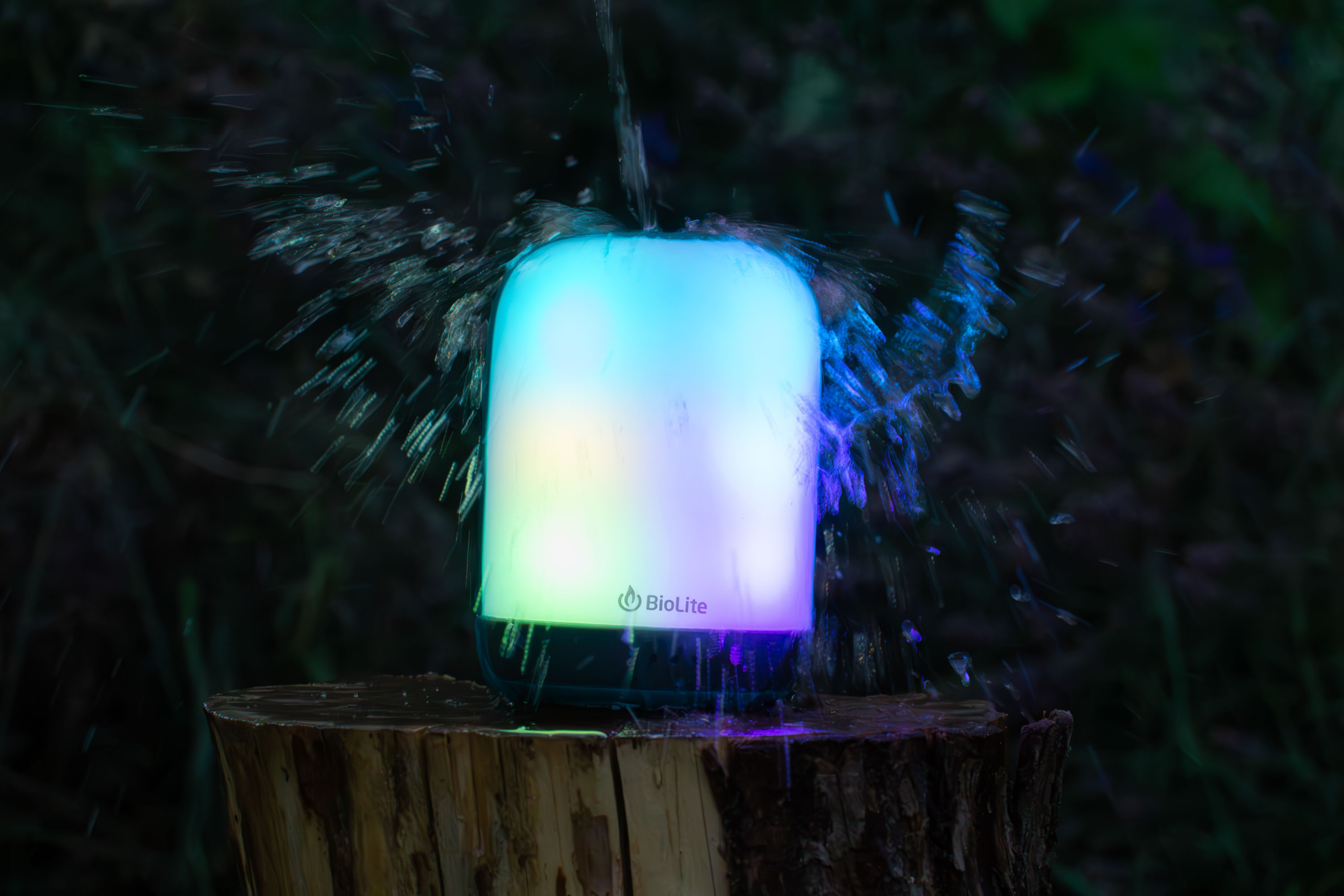
Our testing doesn’t end when the camping trip does, either. It extends to a set of bench tests designed to challenge manufacturer specifications and ensure accurate claims about these lanterns. One of our most important (and taxing) bench tests is our burn-time test, where we challenge claims on total run time with the lantern set on high. These tests can often last an entire day and end when the lantern finally winks out.
Our water-resistance test is equally rough. We break out the garden hose and spray each lantern from varying angles. We’ve only killed one lantern (so far) and find that most can hang in a light simulated rain.
Finally, a lantern isn’t much good if it’s not as bright as it claims to be, and we used a tool known as a lux meter to accurately measure the lumen output of each lantern, both on low and high. All of these tests aim to ensure that these lanterns do what they claim to do, and when they fall short, we make note of it.
Our Expert Testers
While putting this list together, our lead tester, Austin Beck-Doss, was living off-grid and relying on a lantern every single night. His exploits range from rock to snow, but when the light tilts out, its a lantern that he always reaches for. With outdoor products he’s personally tested tallying into the hundreds, Austin has honed a keen eye on what flies and what falls flat when it comes to getting outside.
Adding to the tester pool is Senior Editor Nick Belcaster, who has spent months at a time outdoors where having the proper illumination is key. He’s to thank for our updated bench testing regimen, and he dutifully mans the hose and timers to ground truth claims. Outside of the nitty-gritty, it’s his every-weekend-outside philosophy that keeps lanterns tested on a regular basis.
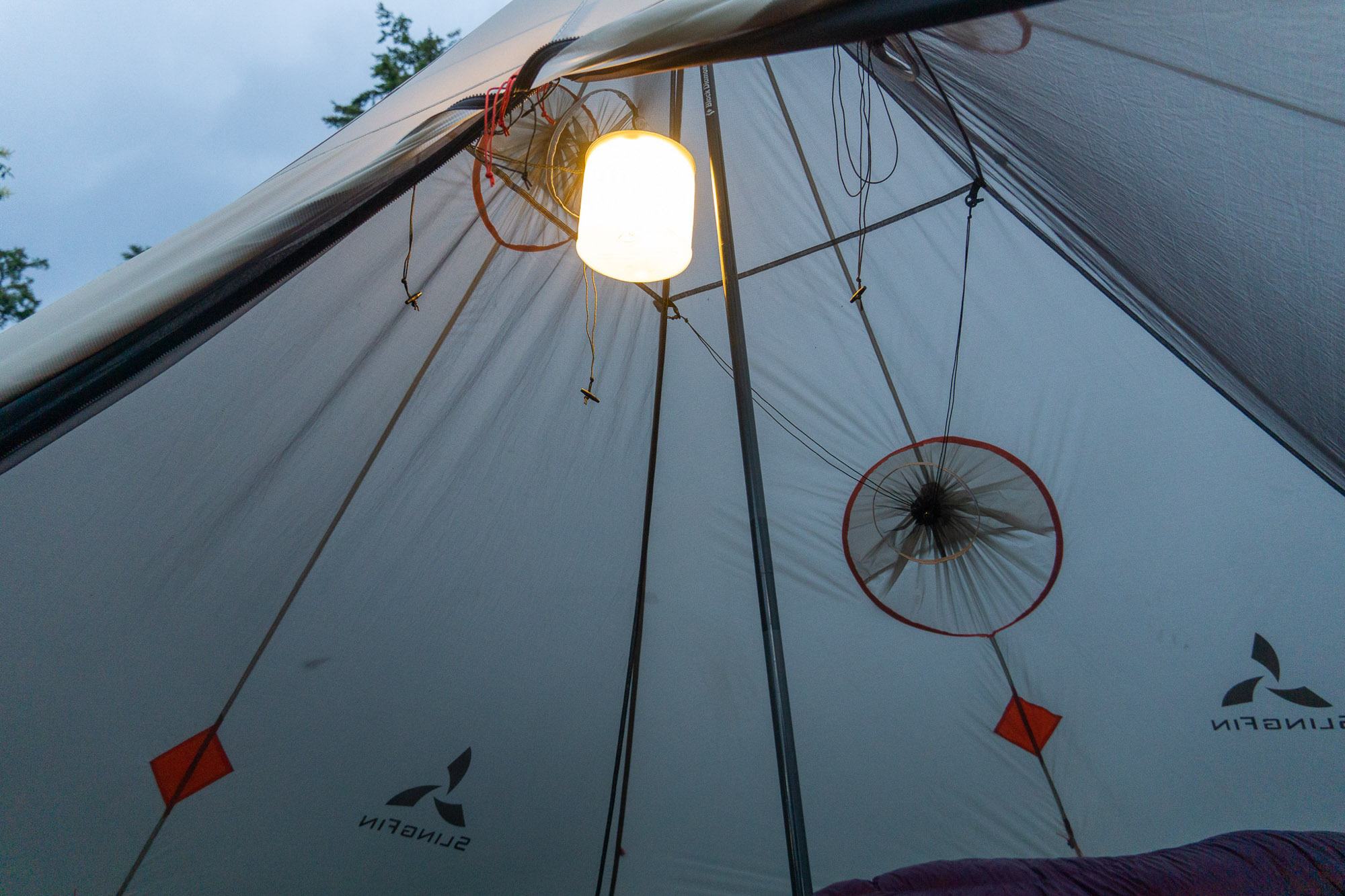

Our Lantern Rating System
When scoring these camping lanterns, we look at four specific rating attributes. These metrics are separate from our overall product scores and are meant to allow you to compare them when deciding on your next purchase.
Brightness is key in a lantern, and the more available, the better, in our opinion. We look for a healthy 500 lumens or more to award a high rating here, with lanterns over 1,000 lumens earning the highest rating. Battery Life is just as important, and we run these lanterns through an entire charge multiple times and record the overall run time. 5 hours at the highest output is what we expect from the best lanterns, along with at least 100 hours on low. The Feature Set is also considered and rated, with lanterns that include more usable abilities scoring higher. Finally, we rate Durability based on resistance to water, dropping, and overall battery longevity.


Buyer’s Guide: How to Choose a Camp Lantern
Electric vs. Gas-Powered Lanterns
Choosing between an electric and a gas-powered lantern comes down to what features you prefer. Electric lanterns are quiet, lightweight, and safe to use inside a tent. In general, we believe that battery-powered lanterns are the best investment these days, and the ever-improving quality of LEDs and rechargeable cells only reinforces that.
However, alkaline batteries lose about half their capacity when temperatures drop below freezing, and rechargeable batteries may not last on multiday trips without a recharge. Consider battery life whenever setting out for longer camping trips, as it’s a bummer to see your lantern flicker out.
Gas-powered lanterns like the Snow Peak GigaPower Lantern Auto are bright, have a long burn time, and work well in sub-freezing temperatures (the runtime drops, but not as much as when using alkaline batteries). Because they use a live flame, they are hot to the touch, need to be used away from flammable materials, and require ventilation. They are also more fragile than electric lanterns. But for the money, it’s hard to beat the old-school feel of the flame.
Lumens and Light Modes
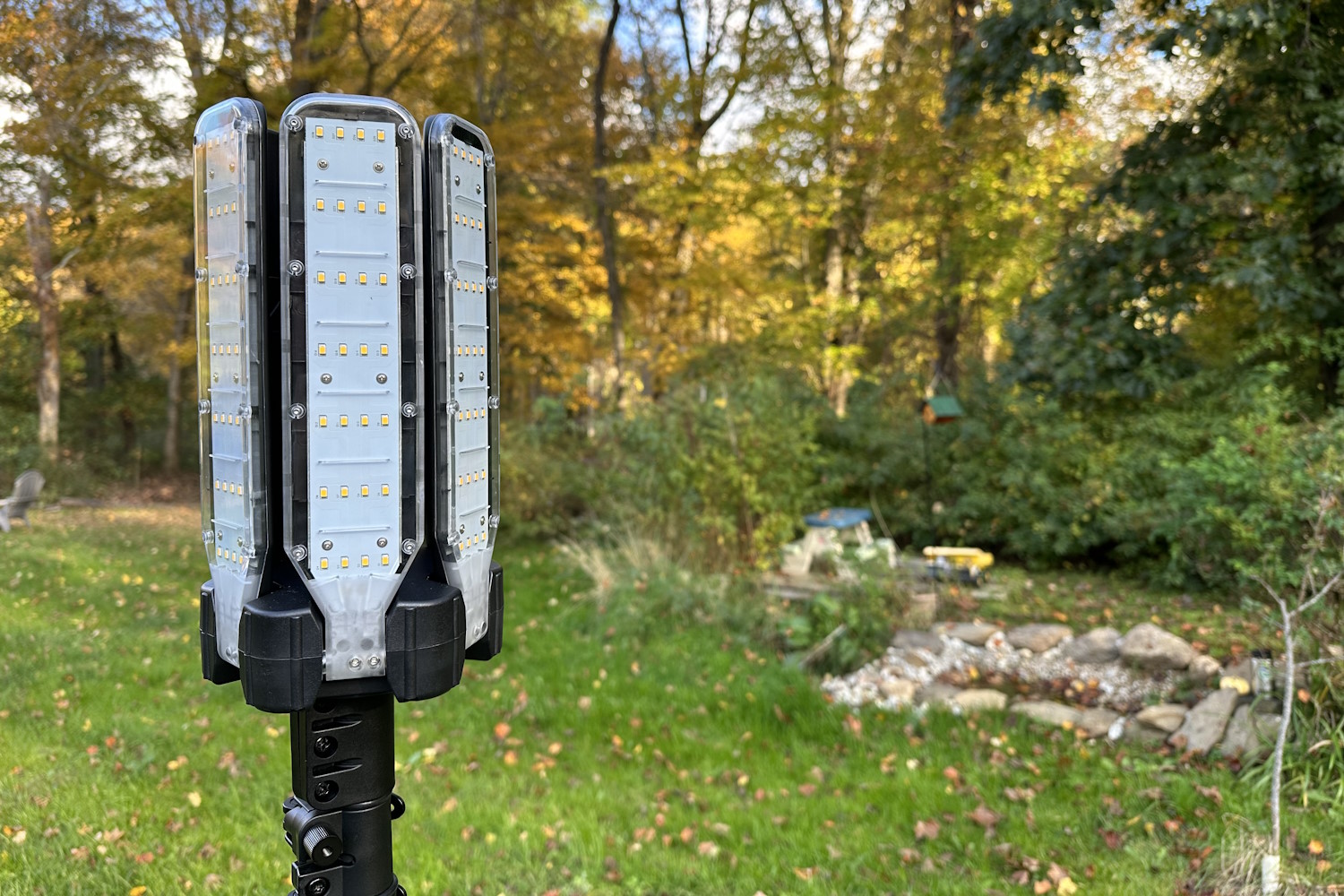

Lanterns need to be bright enough to light up an area, but not so striking that they’ll temporarily blind you if you accidentally look at them. Brightness is measured in lumens, and while you probably won’t need a lantern to mimic the sun (35.73 octillion lumens, by the way), most lanterns have a maximum lumen output somewhere between 200 and 500 lumens. This is more than enough to light up most camping spaces, and it is most often dimmable to adjust to ambient light.
If you’re looking for a more pleasant glow, aim for an output of 60 to 100 lumens. Lanterns like the BioLite Luci Original Clear work well for use inside a tent. Also, know that diffusion is key in how light is displayed around camp, and that translucent globes will provide a softer, more diluted light that’s easier on the eyes. Lanterns like the BioLite AlpenGlow and Goal Zero Lighthouse 600 might be able to put out the same 500 lumens, but the AlpenGlow will be much nicer to look at in intimate settings.
Light Modes
Thankfully, we’ve come a long way from the simple ON/OFF button, and camping lanterns today feature many additional lighting settings for fine-tuning your lighting solution. Dimmability is one of the most important functions, in our opinion, as it allows you to dial in the light output in a set range.
Camping lanterns today have broad dimming ranges, with many able to reduce down to single-digit lumens and then ramp up to full power or even a turbo mode, such as the Fenix CL27R.
Some, like the BioLite Luci Original Clear, are fairly minimal, with only three different light settings: low, high, and flashing. Others jam in different modes to amp up the ambiance at camp and lend some light to whatever mood you’re going for. The BioLite AlpenGlow 500 has four main modes (white light, warm light, color light, and multi-color light), which can be further augmented with a few shakes to add single-side lighting, flickering, and even a “fireworks” light show effect.
Other lanterns, like the Coast EAL22, still offer a red light option, which can be very helpful when aiming to maintain your night vision (or avoid waking your tentmate). This lantern also flashes an SOS signal for emergency situations and a strobe meant for self-defense.


LED vs. Incandescent
Lanterns of old all utilized incandescent bulbs to provide their light, but these have largely gone away in favor of LEDs. Light-emitting diodes are far more energy efficient — often more than 75% — and have a lifespan that exceeds the wire filaments of incandescent bulbs.
Another benefit of LEDs is their high Color Rendering Index (CRI) level, a measurement of how natural colors render in certain light. Lanterns like the BioLite AlpenGlow 500 Lantern boast a CRI of 90 and produce high-quality color lighting.
One downside, however, is that LEDs are typically not user-replaceable. Thankfully, an LED’s lifespan is often given in years, not months, so barring a faulty light, you should never run into the issue.
Weight and Packed Size
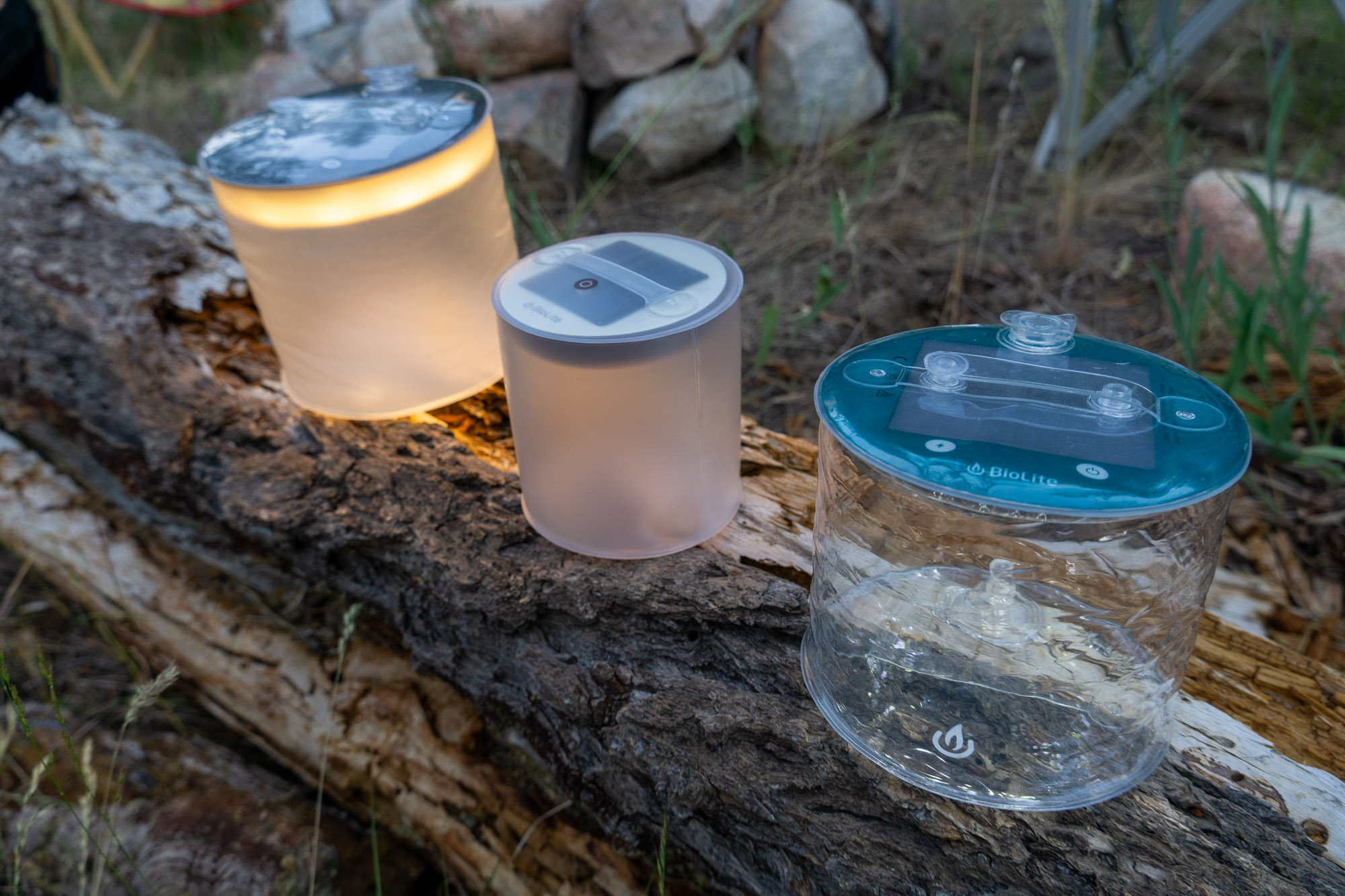

Consider how you will use your lantern. For car camping, weight and packed size are not going to be an issue. If you plan on packing your lantern into the woods, however, you’re going to want something lighter that won’t take up much pack space. If you’re going backpacking, look for a small or collapsible lantern. A good flashlight or a headlamp may even be in order.
Camping Lanterns
Lanterns like the BioLite AlpenGlow 500, Black Diamond Orbiter 650, and Goal Zero Lighthouse 600 are all at the top of our list of the best lanterns to take on camping trips. They all sport an extended battery life, broad light cast, and mounting solutions that make them amenable to different camp setups.
These lanterns all hover around the 1-pound mark, and while they aren’t the most packable, typically, folks going camping need only worry about over-filling the back of the car.
There are also a number of fun lighting options, like the MPOWERD Luci String Lights, which can be strung up and really spread some light, or the Goal Zero Skylight, which will illuminate your whole campsite (and then some). Consider a mix of both types of lighting to cover both your flood and spot light needs.
Backpacking Lanterns
When looking for a lantern to take backpacking, we’re quick to reach for the BioLite Luci Original Clear or Luci Charge 360. The collapsible options are excellent for long-distance trips where weight really matters.
Don’t count out candle- or isobutane-powered lanterns on your backpacking excursions, either. Both the UCO Candle Lantern and Snow Peak GigaPower lanterns are minimal enough not to be a boat anchor in your pack, and operate with fuels you’re likely already bringing along. We’ve often enjoyed the natural flicker of a flame over an LED when deep in the backcountry, and these lanterns easily make the cut in our packing lists.
Battery Life and Types
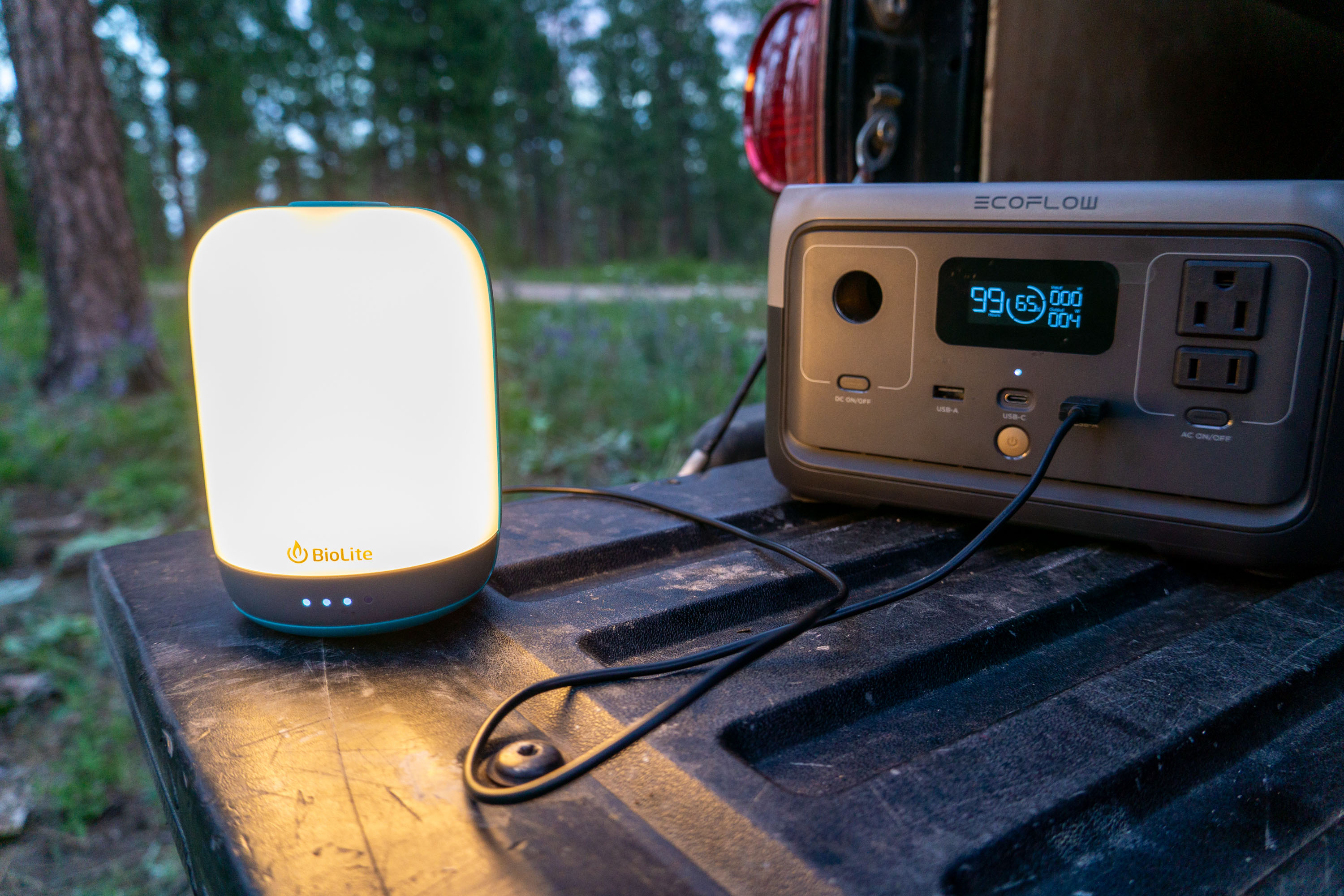

If you’re going with an electric lantern, battery life is a consideration, especially if you’re going to be in the woods for a few days or more. Many lanterns will give you 5-10 hours on high, with longer times in the lower settings. Among the longest-lasting lanterns in our testing were the BioLite AlpenGlow 500 Lantern at 200 hours on low, the Fenix CL30R at 300 hours, and the Goal Zero Lighthouse 600 Lantern at an impressive 320 total hours of burn time.
Lanterns that take disposable batteries will typically accept either alkaline or lithium-style batteries, though it can be good to know when each is warranted. Alkaline batteries are standard household batteries and are generally cheaper than lithium batteries. However, they won’t last quite as long and will lose voltage as they discharge, meaning a dimmer lantern.
Lithium batteries, on the other hand, maintain their voltage until almost dead, are better in the cold, and last up to two to three times as long as alkaline batteries. They are also rechargeable in wall-outlet chargers.


If your lantern uses disposable batteries, it pays to carry extra batteries on your trip. If your lantern uses a rechargeable battery, bring along a portable battery bank or solar charger to top off your lanterns between uses. Some lanterns even incorporate a charging system into the light itself, such as a solar panel or hand crank.
It is good to note that lanterns with rechargeable batteries are becoming increasingly commonplace, though it should be remembered that recharging a lantern from dead flat will take considerably longer than swapping in some fresh AAAs.
Consider also the type of rechargeable battery your lantern uses. Some, like the Fenix CL30R, use a standardized rechargeable 18650 cell that can be used in other electronics, such as headlamps. Most others will be integrated into the lantern and are non-serviceable.
Ease of Use


Electric lanterns generally win the prize for ease of use. They turn on with the push of a button, and the brightness is simple to adjust. Gas-powered lanterns require a bit more work to apply the fuel canister and light the wick.
With advances in lantern tech and more features being added every year, be sure to look for a lantern that hasn’t suffered from tech bloat. The pattern of button presses to move through the different lighting cycles should be easy to remember.
One tech advance that we are on board with is the adoption of USB-C in charging cables. Micro USB is still abundant on many consumer electronics, but a look to the future sees USB-C becoming the new standard. Of the lanterns we reviewed, the BioLite Luci Charge 360, Fenix CL27R, Black Diamond Orbiter 650, BioLite Luci Solar String Lights, and, surprisingly, given the price, the Duracell 2000 Lumen Tri-Power, support USB-C.


Many of the best camping lanterns offer additional features, such as the ability to charge electronic devices and double as a flashlight. These are perks, but they aren’t real game-changers when choosing a lantern.
We’ve found that the most important features enhance the lantern’s main function. Look for lanterns that are water—and dustproof, ones with multiple dimming settings, and ones with integrated solar chargers.
Hang Loops, Clips, and Hooks
Hanging your lantern from the inside of your tent or from a well-placed tree limb can greatly increase the amount of light it can cast on your camp setup. Look for a lantern that sports some type of hook or loop that will allow you to suspend it from above and make the most of your light. The Black Diamond Orbiter 650 is particularly adept at mounting solutions, with a set of hooks for hanging at the top and a set of tripod legs for tabletop use.
Battery Banks and Solar Panels
Because many lanterns today utilize an integrated rechargeable battery pack, they are also able to be used to recharge your electronics on the go. Just how much power you’ll be able to port around will depend on the lantern, but we’ve found that the larger lanterns are able to juice up a modern phone most of the way to a full charge. Remember to pack an appropriate charging cable.
The addition of a solar panel can theoretically extend your lantern time to infinite, though it is important to note that on lanterns that sport them, like the BioLite Luci Charge 360 or Luci Solar String Lights, the panels are typically quite small, and thus will take an extended period of sunlight to fully recharge. This is easier to accomplish when you’re hiking into your camp spot but is better thought of as a nice boost to your lantern’s battery, versus a true recharging technique.
Durability & Water Resistance


We won’t lie — there have certainly been times when we’ve left our camping lanterns out overnight and woken to a soggy light. That’s why investing in a lantern with a high degree of durability will pay out in the long run.
First, consider that many gas lanterns still require a glass lens to operate. Obviously, these will require some more care, and we recommend utilizing a carrying case for transporting them around. The mantles used to contain the flame are also fragile, so be mindful of these as well.
When it comes to electric lanterns, many incorporate some type of rubberized overmolding to guard against bumps and bruises around camp. In terms of water resistance, many lanterns today are built to resist splashes or brief immersions in water.
These are often rated using the Ingress Protection testing standard, which measures resistance to dust and water. An IPX7 rating, for example, relays resistance to water immersion up to 1 m deep.
Price & Value
Camping lanterns typically won’t be the priciest bit of camping kit you’ll ever purchase, but there are a few different levels of value to consider. If camping is an every-now-and-again thing for you, a simple budget lantern might be the ticket. Or, if this is your thing, going out and purchasing a bit of a legacy lantern can make a lot of sense.
Budget
Budget lanterns take some shortcuts to keep their prices low, and one of the main ones is in overall size. The form factor of these lanterns is often smaller, with lights meant for in-tent use being common. Because they are meant for enclosed spaces, they also won’t typically be the brightest, but you won’t need as much firepower to illuminate the interior of a tent. 200 lumens is about the maximum seen here. Expect to pay between $20 and $50 for lanterns of this stripe.
The Duracell 2000 Lumen Tri-Power ($30) is our newly appointed best budget pick, and it’s proof that good technology trickles down. The 2,000-lumen max output is very impressive for such an inexpensive light, and the internal rechargeable battery can be charged through the USB-C port or the integrated solar panel.
The BioLite Luci Original Clear ($30) is a backpackable option that packs down quite small for folks who are watching their pack weight. The Coast EAL22 ($40) is a bit of an outlier in this category, as it puts out an impressive 1,250 lumens and has a larger footprint.
Mid-Tier
The middle band of lanterns is where we suggest most folks consider sourcing their next camp light from, and most are often of the tabletop variety meant to light up most of your camp. These lanterns will max out around 500-600 lumens (bright enough for most any camp task) and run on low for 200-300 hours.
You’ll also get more functionality in these lanterns, including different color modes and integrated power banks to recharge your electronics. For between $50 and $100, you can get into a lantern that’ll last for many seasons to come.
The BioLite AlpenGlow 500 ($80) is an excellent all-arounder lantern with a suite of different light modes and tucks away a 6,400 mAh battery that can top off your phone at the end of the night. The Black Diamond Orbiter 650 ($65) is similarly equipped and brings a few more usage options to the table, like a set of tripod legs. For this price range, you can also get into some more specialized lanterns, such as the Snow Peak GigaPower Lantern ($87).
Premium
For more than $100, you’re getting into some seriously specialized lanterns. These boast outsized output or battery life numbers and are meant to light up your entire campsite (and maybe your neighbor’s, too). High-end materials or build quality can also make lanterns this pricey, with all-aluminum constructions or user-replaceable 18650 battery cells powering them.
The Fenix CL30R ($144) is certainly in the latter camp, and while its output is about on par with what you would pay for a mid-tier lantern, the build is rugged and can manage being kicked around without worry. The Goal Zero Skylight ($300) was the most expensive lantern we’ve tested to date and offers up a full 6,000 lumens in exchange for it, as well as the ability to illuminate your entire overlanding camp.
Frequently Asked Questions
The best camping lantern is the one best designed for how you plan to use it. Look for a lantern that’s bright enough to illuminate your camping space and one that is simple enough to use after a long day of hiking. For 2025, we found the BioLite AlpenGlow 500 Lantern to fit the bill for most of our camping outings, with the Black Diamond Orbiter 650 being a close second.
For backpackers, a lightweight lantern that doesn’t take up too much pack space is ideal. Also, an electric lantern should be able to give you several evenings of light without requiring a recharge.


For most campers, 100 lumens or above is enough to light up many camp spaces. If you prefer a more gentle glow, 50-75 lumens will be enough. Electric lanterns under 50 lumens are good for in-tent use.
For occasional use, a brighter lantern with replaceable batteries will work well. Replaceable batteries are ideal for situations in which an external charging source is unavailable. Candle lanterns will also work well, as they don’t require any fuel besides the candle.
We’re fans of the classic Coleman Lantern. For $65, Coleman has made a solid lantern that will give you years of use. It produces 1,000 lumens on high, and it will run for 7 hours on high before you need to switch propane canisters.
Lantern mantles are ceramic mesh sacks that encase the flame in gas-powered lanterns. They keep the flame small and contained inside the lamp.
If you take care of it, a lantern mantle can last years. You can lengthen the life of the mantle by not dropping or shaking your lantern excessively and by not exposing it to strong wind without the globe attached.


We tested the best flashlights for 2024 with options for every budget. Top picks include Fenix, ThruNite, and more!


We tested the best headlamps of 2025 with options for every budget. Top picks include BioLite, Black Diamond, and more!
Read the full article here




